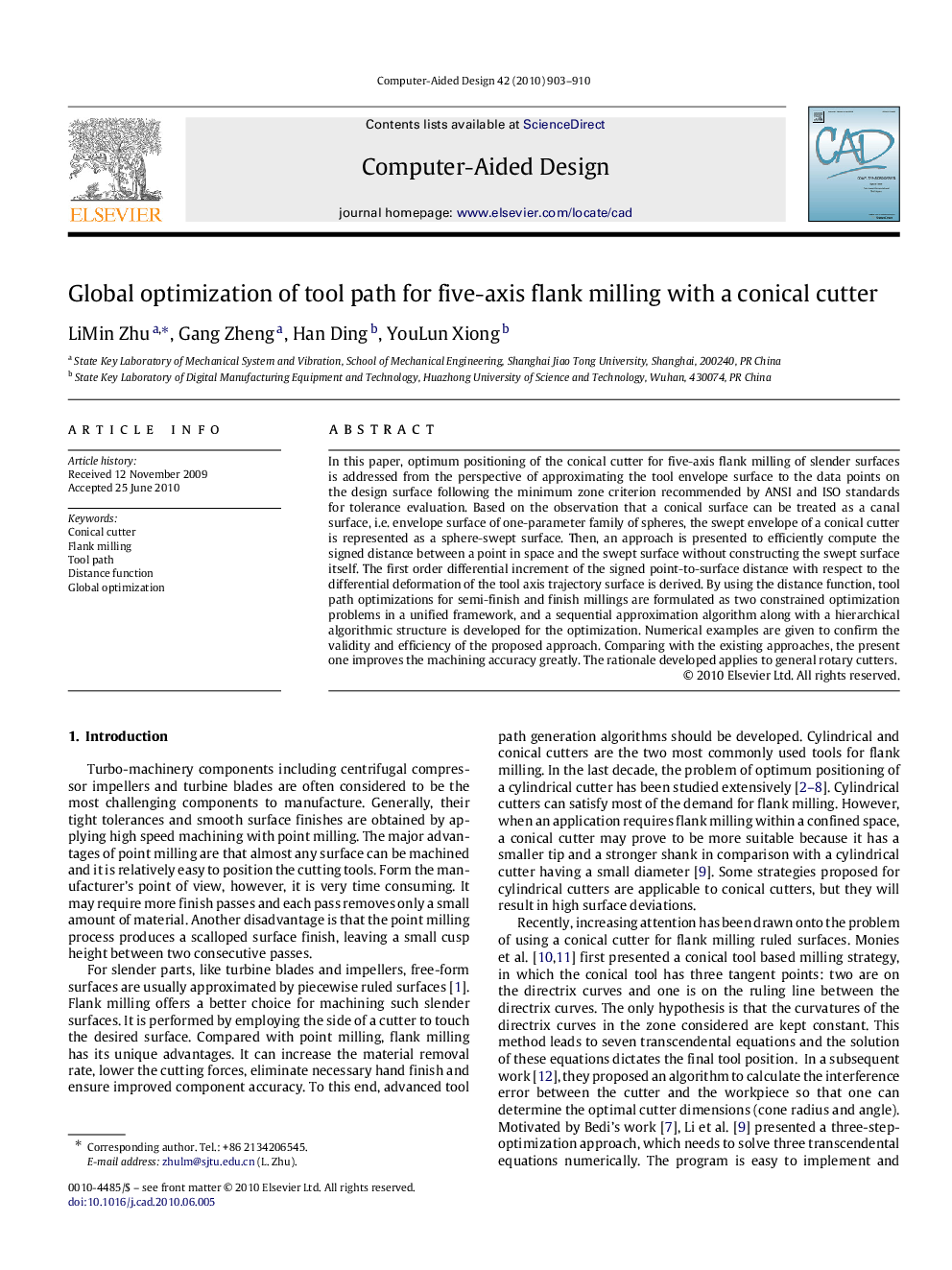| Article ID | Journal | Published Year | Pages | File Type |
|---|---|---|---|---|
| 439778 | Computer-Aided Design | 2010 | 8 Pages |
In this paper, optimum positioning of the conical cutter for five-axis flank milling of slender surfaces is addressed from the perspective of approximating the tool envelope surface to the data points on the design surface following the minimum zone criterion recommended by ANSI and ISO standards for tolerance evaluation. Based on the observation that a conical surface can be treated as a canal surface, i.e. envelope surface of one-parameter family of spheres, the swept envelope of a conical cutter is represented as a sphere-swept surface. Then, an approach is presented to efficiently compute the signed distance between a point in space and the swept surface without constructing the swept surface itself. The first order differential increment of the signed point-to-surface distance with respect to the differential deformation of the tool axis trajectory surface is derived. By using the distance function, tool path optimizations for semi-finish and finish millings are formulated as two constrained optimization problems in a unified framework, and a sequential approximation algorithm along with a hierarchical algorithmic structure is developed for the optimization. Numerical examples are given to confirm the validity and efficiency of the proposed approach. Comparing with the existing approaches, the present one improves the machining accuracy greatly. The rationale developed applies to general rotary cutters.
Research highlights► Tool path is optimized from the perspective of surface approximation. ► Geometric deviations are computed without constructing the tool envelope surface. ► The rationale developed applies to general rotary cutters.
